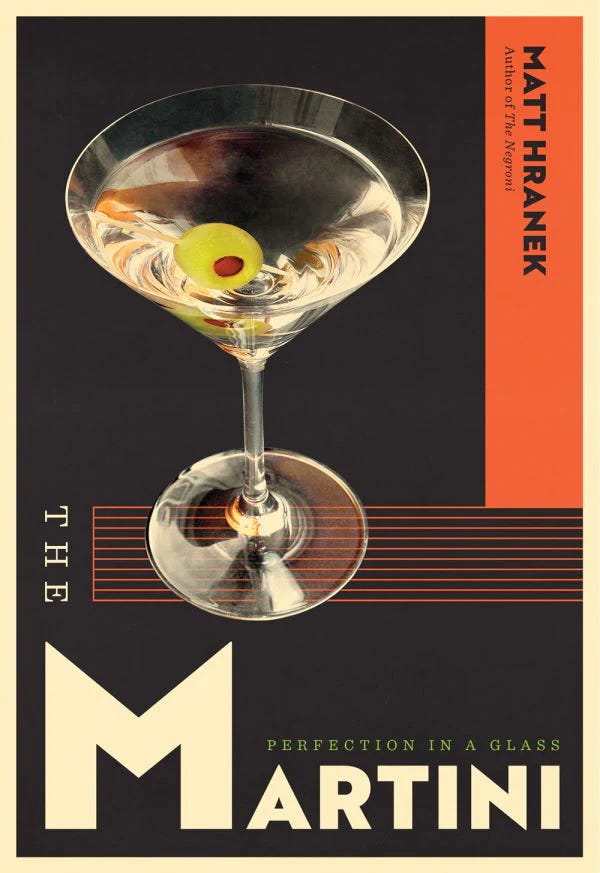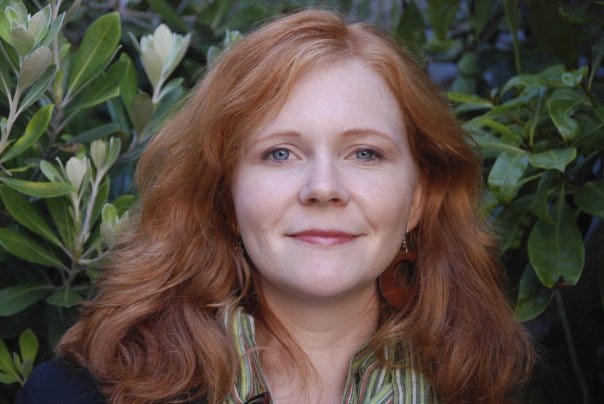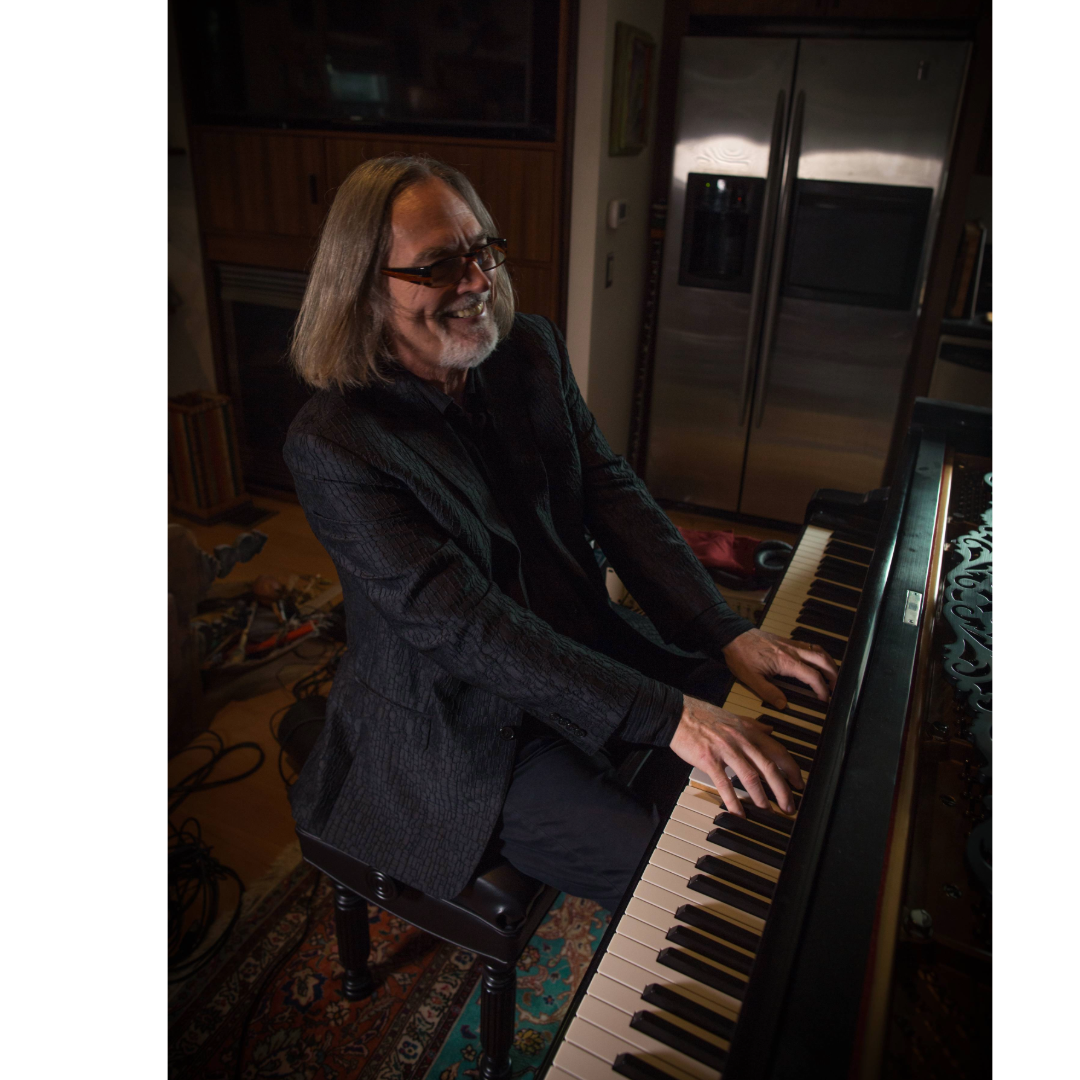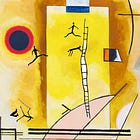How I Became an Ecstatic Shaker: Part Spiritual Testimony, Part Love Story
Opening a Jar of Honey, Essay Two
By Hillary Keeney
This is the second essay in my series celebrating ten years of Sacred Ecstatics. Click here to read essay one, “Opening a Jar of Honey.”
One of the mysterious truths of Brad’s life is that he became a shaking healer among the Kalahari Bushmen of Southern Africa, the world’s oldest living culture.1 That mystery spilled over into my life as well when we became partners. Rather quickly I went from being a Zen Buddhist who had never heard of ecstatic healers or shaking shamans to putting my own trembling hands on people and speaking to global audiences about ecstatic spirituality. It was a dizzying change I never saw coming.
Brad recently encouraged me to share my experience, suggesting that it’s more relatable than his. That has to be true—Brad’s life story is filled with spirit encounters, initiations into secret traditions, shamans in remote places who dreamed his arrival, flying books, etc. I tease him that he went through all of that so I don’t have to. I’d rather not have a wooden statue come to life in my basement or see a flock of spirit birds fly through the wall, thank you very much. The stories are sufficient to make me a believer.
We also both agree that none of the supernatural miracles are as important as catching the fire that opens the heart, moves the body, and cooks the soul. And that fire is available to anyone under the right conditions.
So for all you regular folk like me, here’s the story of how my life in Sacred Ecstatics began, along with a few things I’ve learned along the way.
Strange Noises
When I first met Brad in 2007, he was an eccentric professor who had recently joined the faculty at the California Institute of Integral Studies where I was a beginning doctoral student. The program was online, except twice per year everyone gathered from all over the world for a week-long retreat on the California coast. Retreats were held at a three-star oceanfront hotel with average food, a decent bar, and incredible views.
One night, Brad gave a presentation. It was the first time I encountered him in person, and I had no knowledge yet of his work. The talk was held in the largest conference room with walls of windows facing the ocean. But the sun had already set. You knew the ocean was there, but you couldn’t see it. I sat down and waited while the other students and faculty were filing in.
Then I heard a noise, like a low grunting sound. I looked to my right and saw Brad off to the side of the room by himself. He was pacing back and forth, occasionally pausing to bend forward and stomp, working himself up in some way I didn’t understand. My first thought was, “I can’t believe he isn’t self-conscious about carrying on that way in plain sight.” But Brad didn’t seem to care if anyone saw. Whatever he was doing clearly felt natural to him, and this intrigued me.
Once everyone had taken their seats, Brad sat down in a chair in the center of the room and began to speak quickly and passionately about something I had never heard of called n/om. (Pronounced “nome” but with a click on the “n.”) This word comes from the Ju/’hoan Bushmen (San) people from Southern Africa.
Apparently, Brad had been traveling there for decades to study and participate in their healing tradition. In a voice buzzing with energy, he explained that n/om is a powerful energy used for healing:
“N/om is a gift from the Sky God—the force behind creation itself. But it’s more than just energy—n/om is both spiritual electricity and divine love combined. It fills you with the greatest joy imaginable. When it gets inside you it sets your soul on fire and makes you tremble, shake, sing, and shout!”
Brad’s earlier behavior started to make more sense. He continued:
“There is no such thing as subtle energy healing in the Kalahari. When I tell the Bushmen about reiki and other kinds of silent healing, they roll on the ground laughing. ‘God loves to sing and dance!’ they exclaim while shaking their heads in disbelief.”
I noticed several members of the audience shift uncomfortably in their seats. There were more than a few subtle energy healing enthusiasts in the room, and Brad was challenging a sacred cow.
“The Bushmen hold a dance to wake up the n/om and circulate it among the people. N/om is the world’s oldest medicine. There is no talking cure in the Kalahari. In fact, n/om is the cure for too much talk!”
Brad exuded so much crackling electricity I thought sparks would shoot from his eyes. Even the slightly offended energy healers were riveted. Whenever he experienced a burst of energy, Brad would let out a rapid shout: Hey! Shama-ta-ho! Hey! (Or something like that.)
A few people in the audience who seemed more familiar with Brad’s work shouted back. Even by California standards, this was an unusual faculty lecture.
“Healers must sing to help the n/om climb from the belly to the heart. No song, no n/om! As it rises, it turns from raw power to fiery love. Only then does the n/om get strong enough to shoot into another person, like being struck by a fire-tipped love arrow. Hashta-hey!”
Brad let out a big shout that sent a bolt of invisible lightning through the room. Most of us jumped in our seats and then broke into laughter. Brad smiled. Then he abruptly lowered his voice, the room hushed, and he said something I’ll never forget:
“For an arrow, thorn, or nail of n/om to penetrate, the recipient’s gabesi must be soft.” He pointed to his belly. “If a person is too rigid, emotionally cold, stuck in their heads, self-absorbed, or selfish, then the n/om cannot penetrate.”
Brad’s voice got louder:
“But no one ever knows who is soft and who is not until the n/om starts cooking and the arrows start flying! You can’t choose whether you’ll get pierced by a n/om dart. All you can do is make yourself a better target, and the rest is up to the gods!”
That really got Brad going. He and a man in the audience exchanged several shouts.
“Once n/om takes up residence inside your body you become a n/om-kxao [nome-cow], an ‘owner of n/om.’ What that really means is n/om now owns you. After that, nothing else will satisfy your soul’s hunger and thirst. You become a hunter-gatherer of the Big God’s love electricity, a holy Kalahari roller with a song in your heart!”
Brad’s talk became more like a revival sermon. He and some members of the audience got more and more worked up. Eventually, someone turned on some music and everyone stood up, moved the chairs aside, and began to dance and shake.
I joined in, but immediately felt awkward. I couldn’t tell if we were just dancing for fun, or if I was supposed to be feeling something. N/om, perhaps? And was I supposed to be shaking my body or moving in time to the music? I searched the room for contextual cues.
Brad was going around putting his trembling hands on people’s heads or backs. They responded by shaking with more intensity. Others would then gather around that person and a flurry of movement and sound-making would ensue.
I grew more self-conscious and wondered, “If Brad comes around and touches me, am I supposed to act like that?” I retreated to the edge of the room. At one point, Brad touched a man who then became frenzied and collapsed to the floor. People got down and laid their hands on him while he shook. Brad was unfazed by it all.
But I didn’t know how to plug into what was happening, so I left early and went to the bar for the only shaking medicine I understood at the time: a gin martini.
Later when I returned to my room, however, I pondered what Brad had said about n/om and being soft. Back then I lived in Los Angeles and danced in salsa clubs several nights a week, but in comparison to what I had seen earlier, nightclub dancing was predictable and tame. This kind of n/om-fueled expression felt foreign and strange. Maybe my gabesi needed softening?
I searched inside myself but couldn’t conjure what sort of feeling would have to awaken in me to start acting the way Brad did. He clearly had something within him that I didn’t possess. But I wasn’t sure I wanted it, either. I was a practicing Zen Buddhist at the time and still trying to find my footing on that path. What need did I have to start shouting and shaking when I was already struggling to be silent and still?
Cybernetics
As my doctoral studies progressed, I quickly discovered that being a Kalahari n/om shaker was only one area of Brad’s expertise. We read his classic book on cybernetics and family therapy, Aesthetics of Change, and it was like discovering an alternative universe.
I’ll admit that few things sound less spiritual than “cybernetics, the study of circular causal and feedback mechanisms in biological and social systems.”2 That is, until you realize that like Buddhism and other religions, cybernetics leads to liberation from the illusion of self and a reckoning with our interdependence inside Indra’s Net.
Aesthetics was my first encounter with the revolutionary origins of family therapy, a field that once challenged the foundations of psychology, psychiatric diagnosis, and virtually all contemporary presumptions about “mental” health and therapeutic change.
I also soon learned that Brad was not only a cybernetic theorist but a creative therapist who practiced the circularity he preached. He posted a transcript online from one of his cases conducted in rural Louisiana called, “The Deer Family.” It was one of the most exciting things I’d ever read—like magical surrealist theatre, but real.
I still had little interest in n/om or shaking medicine (a book Brad had recently published), but cybernetics began to slowly unravel the way I thought about almost everything. At the same time, it affirmed all my most cherished Buddhist ideas.
As a professor, Brad was his usual tornadic self—blowing through town and stirring up good trouble with his signature blend of humor, kindness, and intellectual precision. Brad challenged me directly a few times in class which I received as encouragement, a sign he thought my mind was worth perturbing.
“His vitality rubs off in various ways…contact with him shakes up a life.”
- Playwright Nor Hall, describing Brad
I wish I could say that I had the wisdom back then to immediately drop all my non-cybernetic social science paradigms and ask Brad to be my academic mentor, but I didn’t.
Still, my gabesi was being softened more and more as I slowly discovered how ignorantly trapped I was in lineal causality and psychological thinking. I now see that cybernetics provided the necessary shake-up that helped open the door to my becoming a shaker. And soon my relationship to n/om, and Brad, was about to radically change.
The Kalahari Hug
I had been serving as a graduate teaching assistant, and toward the end of my doctoral coursework I was assigned to teach a class with Brad on cybernetics and creative transformation. Before the semester began, we made plans to meet at the next autumn retreat to discuss the course.
On the first evening after dinner, I was walking down the hall with a few other students. We heard music coming from a conference room and went in to investigate, assuming there was a party going on. It turned out that Brad had been invited to lead a small shaking medicine gathering. This time a clear voice inside me said, “Just go in. You don’t have to do anything or try to make anything happen.” I entered the room viscerally empty of all purpose and expectation.
The lights were off, but I found my way to a chair in the corner and sat down. Soon Brad walked over and put his hands on top of my head. (Later he told me it was so dark he didn’t even recognize who I was at first.)
I just sat there, receiving the gentle but strong vibration that came through him. Little by little, I surrendered to it. After some time, Brad knelt on the floor in front of my chair and continued to pass the n/om vibration into my head, my shoulders, and my back. A few other students gathered around us. Finally, Brad went full Kalahari and embraced me in a vibratory hug, like this:
I felt a vibration begin to rise up through my legs, and then my whole body started to spontaneously shake. Not in a wild convulsive way, but more like a steady, strong tremble. I lost track of time and still have no idea how long Brad and I were in that n/om embrace. It seemed like hours. Finally, someone turned on the lights and the shaking settled down. Everyone was smiling and seemed uncommonly peaceful.
I felt disoriented but exhilarated, like I’d been swept clean from the inside out and filled with sunlight. Later I would come to know this condition as being “drunk” on n/om—the world’s oldest substance-free intoxicant. As the group spilled out into the hallway, Brad and I looked at each other and both said with a laugh, “I guess we planned our class for the semester!” We soon discovered how true that was.
Cooking the Silver Trout
Our course on the cybernetics of creative transformation began online a week later. Brad opened by saying: “Let’s forget everything we planned to do. Hillary, teach us about love.” I shared the story of when my brother, father, and grandmother died in a car accident when I was seventeen, and how it launched my spiritual path. There was an outpouring of love in response, and the class was quickly swept away on a semester-long cybernetic journey of the heart.
People received visions, healings, and all kinds of transformations. Seeds were mailed around the country, people’s imaginations got married, and one man’s cat became a beloved teaching assistant.
Brad and I conducted a cybernetic experiment and wrote the class “textbook” as the semester unfolded. The title of that paper became:
“Silver trout” is from a poem by W.B. Yeats called The Song of Wandering Aengus. It became the main theme of the class after both Brad and another student dreamed of that poem on the same night. We reported in the course record:
“At this moment the class fell into its own reason for being alive. It became a temple sheltering the expression of longing for love. We became a tribe, a love tribe willing to risk being fools for the exploration of the calling forth of transformative presence in our interactions with one another. No different than a Kalahari healing dance…”
Later, Brad said this to me about the class:
“In the Kalahari, sometimes two n/om doctors will embrace one another while someone else stands in between them. Each amplifies the other’s n/om while the person in the middle receives the extra-fortified current. This is what happened in our class. You and I entered a semester-long n/om embrace and put the whole class in the middle. We discovered that physical distance didn’t matter. Everything that took place online was fueled by the spiritual life force and sacred emotion that circulated between us.”

Brad and I never left the silver trout stream. That university course was the precursor to what eventually became the Sacred Ecstatics Guild. Every October we launch a new season, creating an online space through which to radiate n/om and surrender to a dream-led, love-fueled adventure to the “Big Room.”
In true cybernetic fashion, each season is improvised, an original composition that feeds on n/om. By the end we all feel as if we’ve been reborn inside a new reality that’s alive with infinite possibility, pulsing with electricity, and saturated in a love as vast as the Kalahari sky.
Making a Home for N/om
Though Brad eventually took me to visit the Bushmen and get “checked out” by the women healers, all my ecstatic education and n/om-strengthening have taken place inside Sacred Ecstatics.
We don’t wake up our n/om by dancing around a fire under the stars but over Zoom during weekly Spirit House Meetings, using Brad’s Steinway piano and digital keyboards, our voices cooking prayers and our bodies surrendering to spontaneous movement. When we gather in person it’s usually in a Victorian parlor in New Orleans with only enough room to shake in our seats. And boy, do we get cooked! Shama-ta-hey!
This is the context in which I have grown into a conductor and radiator of n/om: thousands of miles from the African desert, in the middle of my urban reality. I don’t know if this is ideal, but I do know that the n/om-doctor I married is a pianist, and there are no pianos in the Kalahari.
A lot of people fantasize that if they could go back in time and attend a real Bushman dance it would surely be easier to get struck by a n/om dart. But I speak from experience when I say that right here in the midst of your non-exotic landscape is the perfect place and time to soften your gabesi and make yourself a better home for n/om. Below are a few things I’ve learned about that over the last fifteen years, in no particular order.
Know that receiving n/om and keeping it alive afterward require the same life habits, so don’t get too hung up on whether you have it or not. (Self-assessment is a major n/om-blocker.) At the same time, keep it real. Enjoy the softening shake-up and let the Kalahari gods take care of the rest:
Hunt sacred emotion. N/om is made of a deeply felt, loving passion for the Big God, called by any name. If you want n/om, what you want is to feel this sacred emotion amplified by rhythm, song, and movement until it bursts into flame. This Big Love is everything! Get some of that good, old fashioned religious feeling and let it move you.
Don’t be sticky about names and definitions. When you’re filled with n/om, God is a song. Which is to say God is a rose, a loaf of warm bread, a drop of water, a symphony, a vibration, an incantation, an ostrich egg, a holy wind, and also the traditional bearded Big Dada in the sky. Be more like a Bushman healer: feel God more and define God less.3
Be a fool for n/om. Just to warn you, n/om is fairly uncool. It has no social or spiritual currency in our modern times. Religious emotion and its ecstatic expression are more likely to draw uncomfortable stares than earn you accolades.4 But once you catch the fire of n/om you’ll be like Brad in that conference room and not give a hoot that some lady is looking at you funny. Become an uncool fool who is spiritually hot. That will make the Kalahari ancestors smile.
Be against interpretation. No more constructing insight, understanding, narratives, diagnostic labels, or psychological explanations about self and others. Do this for n/om reasons, cybernetic reasons, Buddhist reasons, or silver trout reasons. Your choice.
Empty yourself of all expectations and desires for anything to spiritually happen. It’s good to hunger for n/om. But when your ego gets wind of it, that desire can get hijacked and you easily end up pursuing a path of self-inflation rather than ecstatic awakening. It’s almost impossible to sort out which road you’re on by yourself, so you’ll need a spiritual teacher to help you with that.
Be generous. The purpose of receiving n/om is to have a working hookup to the wellspring of divine light, unconditional love, and goodness that many people call God. Not just for your own survival and wellbeing, but so you can put that connection to use in your actions, relations, and creations. We’re all better people, parents, musicians, artists, cooks, etc. when our bellies are soft, our hearts are on fire, and we’re charged with spiritual electricity. Be forgiving and be for giving. N/om is meant to be shared.
I’ll end with my favorite testimony about receiving n/om. It’s from a Black southern preacher interviewed in the 1930s. He felt its fire, though almost certainly never heard of its old Kalahari name:
“I used to wonder what made people shout, but now I don’t. There is a joy on the inside, and it wells up so strong that we can’t keep still. It is fire in the bones. Any time that fire touches a man, he will jump.”5
I used to wonder, too.
Hillary Keeney
(Thanks for hitting the heart button!)
***
Here’s Part 1 in this essay series:
And here’s Part 3:
See Brad’s book, Bushman Shaman.
Cybernetics: Circular Causal, and Feedback Mechanisms in Biological and Social Systems was the title of the published proceedings from the Macy Conferences held in the early 1950s. Edited by Heinz von Foerster.
Folk artist and evangelist, Sister Gertrude Morgan, called God “Big Dada” and Jesus “Little Dada” and we love that so much.
See Brad’s book, Shaking Medicine: The Healing Power of Ecstatic Movement and Julie McDaniel’s Lost Ecstasy: Its Decline and Transformation in Religion.
From the book, God Struck Me Dead: Voices of Ex-Slaves, edited by Clifton Johnson (1969), p. 74.












Thank you!
“I’d been swept clean from the inside out and filled with sunlight.” Yes!! Thank you for this amazing testimony. There is a river!